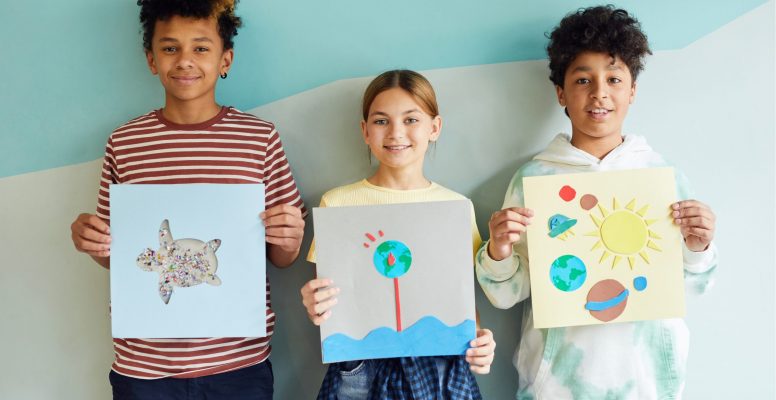
Creative Arts in Therapy: How Drawing, Music, and Drama, Can Help Kids Express Themselves
Written By: Faith S. MacDonald, Clinical Trainee at ACS, On-Campus Counseling Program
WHEN PEOPLE THINK OF THERAPY,
they may think it consists of sitting in a room talking about their feelings, or perhaps not talking at all. But typically when they think of therapy, they don’t usually think of children. Maybe because there’s a misconception that children don’t need therapy. After all, they’re children- What could they possibly need therapy for?
Yet many children struggle to communicate their needs and emotions, as well as self-regulate these emotions. Coupled with their developmental age, and perhaps a learning disability or un-diagnosed disorder, all of this can be overwhelming for children. Learning how to navigate friendships, schoolwork, extracurriculars, and their home-life, alongside social and emotional needs, is a lot given any age, especially young children. Oftentimes, without adequate support, these children struggle in silence.
So how do we, as clinicians, educators, parents, teachers, and mentors help?
We must meet them at the developmental capacity that they possess. For some children, this could be using forms of play therapy, and for others that may not resonate. Instead, those children may require us to get a little more creative. One different approach is utilizing creative and expressive arts therapy with children.
Given how unique and impressionable each child is, it’s about attuning to their needs through a fun, non-intimidating way that allows them to express their emotions in a safe and conducive way. When it comes to building rapport and a positive therapeutic relationship amongst clinician and child, creative and expressive arts activities such as drama, drawing, and music, can be successful. Not only do these modalities strengthen cognitive skills and adaptive functioning, but they also have significant neurological impacts (i.e. increased brain plasticity, sensorimotor integration, executive functioning, etcetera). Ultimately, this makes creative and expressive arts a highly effective modality of therapy for children.
Creative and expressive arts may also help children express their feelings and needs without having to use their words. For many children, these approaches can be a tool to learn how to cope with their own psycho-social challenges and lead to profound impacts on a child’s mental and emotional well-being.
One highly effective form of expressive arts is drama therapy, whereby clinicians use role-play and storytelling to address the emotional and behavioral needs of their client. Often, kids resonate with drama therapy because it allows them to use their imagination through exploring different roles. This type of role-play can aid children in perspective-taking, developing problem solving skills, as well as coping strategies. But it doesn’t stop there!
Clinicians may utilize clients’ interests and tailor role-playing activities to what resonates most with the child. For instance, if a child doesn’t like acting improvisation, but they love drawing, a clinician may draw with a child and identify different emotional themes that are arising through the child’s artwork. Similarly, if a child loves music, a clinician might bring a tambourine and sing or play a song with their client. During and after these activities, clinicians will talk with the child about how that activity made them feel.
Whatever modality of expressive arts a client is interested in, clinicians can utilize these approaches when it’s conducive to the therapeutic process. These are just a few examples of just how enriching creative arts can be for a child’s imagination, communication, and coping skills, as well as psycho-social well-being.
___________________________
References
Dunphy, K., Mullane, S., & Jacobsson, M. (2014). The effectiveness of expressive arts therapies: A review of the literature. Psychotherapy and counselling journal of Australia, 2(1).
Hall, T. M., Kaduson, H. G., & Schaefer, C. E. (2002). Fifteen effective play therapy techniques. Professional Psychology: Research and Practice, 33(6), 515–522. https://doi.org/10.1037/0735-7028.33.6.515
Ray, D., Bratton, S., Rhine, T., & Jones, L. (2001). The effectiveness of play therapy: Responding to the critics. International Journal of Play Therapy, 10(1), 85–108. https://doi.org/10.1037/h0089444
